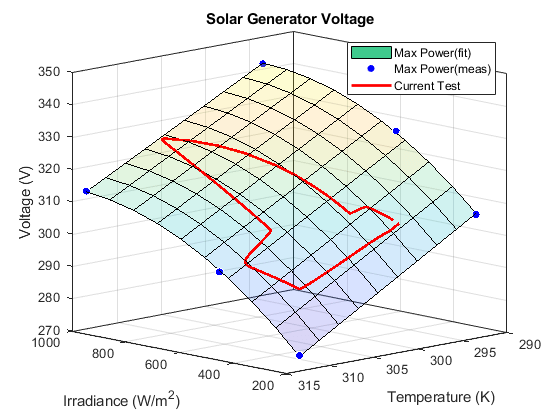Photovoltaic Generator
This example shows how to create system-level model of a photovoltaic generator that can be used to simulate performance using historical irradiance data. Here the model is tested by varying the irradiance which approximates the effect of varying cloud cover. Power generation steps immediately following the irradiance change. Environmental temperature also varies during the test. The DC-AC converter efficiency is assumed to be a fixed 97 percent, this value having been determined from the SolarPowerInverter example model.
Model

Simulation Results from Simscape Logging
The plot below shows the power output and temperature of the panel over a one hour test. The environmental temperature varies over time, affecting the panel temperature and its conversion efficiency.

The plot below shows the voltage output of the panel with respect to panel temperature and irradiance. For a given temperature and irradiance, solar panels have a voltage draw that will result in maximum efficiency. The blue dots on the plot are measurements from specific tests, and the surface is a polynomial fit to those points. The control system attempts to keep the voltage drawn from the panel such that it is on this surface and maximizes the efficiency of the panel.

Results from Real-Time Simulation
This example has been tested on a Speedgoat Performance real-time target machine with an Intel® 3.5 GHz i7 multi-core CPU. This model can run in real time with a step size of 250 microseconds.